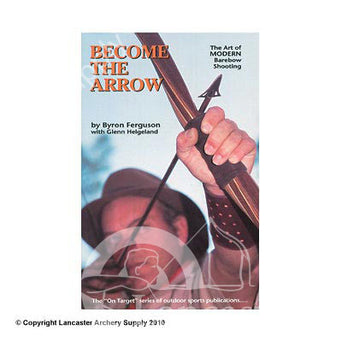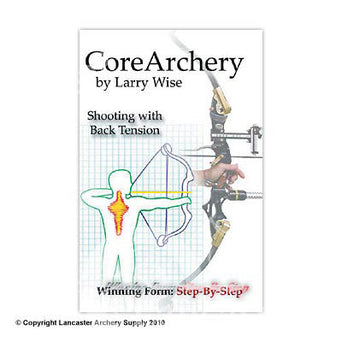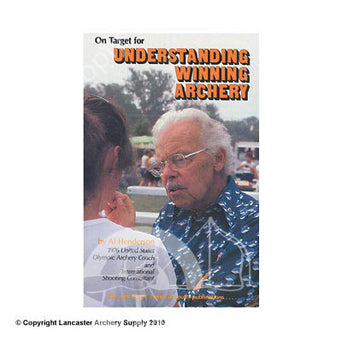What the Best Arrows for Hunting?
It can be daunting looking through a stockpile of arrows in a store or online to figure out which ones to buy for your first hunting arrows. Don’t get discouraged or feel overwhelmed. The path to finding the right arrows for you is simple.

If you’re feeling uncomfortable with the task, find an archery pro shop near you and they will walk you through the process of picking the arrow type, size, stiffness, and several other options.
Compound and Recurve Arrows
But if you want to take a crack at it on your own, start by determining if you are looking for arrows for a traditional bow or a compound bow. Modern arrows for the two really aren’t that different from one another in construction, but if you’re shooting a traditional bow, you’re probably going to want arrows fletched with feathers, rather than vanes. And vice versa for compound bow shooters.

Plastic vanes are weatherproof and more durable than feathers, but the feathers will fold up as they slide across the shelf of a recurve or longbow. Vanes are not so forgiving. This is the main reason it is important to make sure your arrows are fletched correctly.
What Spine to Choose for Your Arrow
The most critical factor in choosing the correct arrow for your bow setup is spine. An arrow’s spine determines how much it flexes. You want one that flexes some, but not too much.
Correct arrow spine is determined by considering arrow length, point weight and peak draw weight of your bow. Don’t worry. You don’t have to do any calculations to determine correct arrow spine. Arrow manufacturers have that covered.
 Be sure to choose the right spine for your setup
Be sure to choose the right spine for your setup
Arrow Manufacturer Spine Charts
Every manufacturer will have an arrow spine chart that recommends various spines according to those three variables.
For example, Gold Tip recommends a 400 spine for an arrow that’s 27 inches long, fitted with a 100-grain point and is shot from a bow with a peak draw weight of 50-54 pounds. Cut that arrow to 26 inches, and the spine recommendation changes to 500.
How long should your arrow be?
That’s an easy determination for compound bow shooters, whose bows have a defined draw length.
Compound Bow Arrow Length
Put a full length, uncut arrow on your bow and draw it back. At full draw, mark the arrow for cutting anywhere you want in front of the rest.
If you plan to use a big fixed-blade broadhead, you might want to mark the shaft for cutting at the point where the arrow meets the front of the riser. That way, the broadhead will always stick out in front of the bow, eliminating any clearance issues that could be created by drawing it inside the shelf area.
 At an archery pro shop, technicians will cut your arrows to the proper length and install arrow components.
At an archery pro shop, technicians will cut your arrows to the proper length and install arrow components.
But that’s all personal preference. What’s most important is that the arrow be long enough to stay on the rest at full draw.
Traditional Bow Arrow Length
With traditional bows, determining correct arrow length is a bit trickier because these bows don’t have a set draw length. There is no back wall beyond which you can draw the bow no further.
It’s best to be generous when you cut a traditional arrow. Leave plenty of room for inconsistencies in your draw length.
At an archery pro shop, technicians will help you determine the correct length for your arrows, cut them to that length and install the point inserts. That’s another advantage of buying from a pro shop.
Hunting Arrow Construction Material
Aside from specialty wood arrows that are for traditional archery only, hunting arrows essentially fall into three main construction categories - carbon, aluminum or carbon/aluminum combo.
Carbon Arrows
Carbon arrows are the lightest and most indestructible of the three, and they're primarily what you will see offered as bowhunting arrows.
Aluminum Arrows
Aluminum arrows were the standard before carbon came on the scene, and so many bowhunters choose them for nostalgic reasons. The are prone to bending.
Carbon/Aluminum Combo
The carbon/aluminum combo arrows generally are preferred for the extra punch they pack, since they feature a core of one material wrapped around a shell of the other.
Arrow Diameter
A relatively new trend in the hunting-arrow market is having a variety of arrow diameters to choose from. Diameters among hunting arrows were much more uniform 20 years ago. Now, there are arrows with 4mm diameters, 5mm and 6.5 mm, among others.
Skinny or fat? What’s right for you?
Think of the 6.5mm carbon arrows as “standard.” You’ll find lots of arrows by lots of manufacturers that are about that measurement in diameter. These arrows will perform well from most bows under most conditions.
 Arrow diameters - 4mm at top, 5mm in middle and 6.5mm at bottom
Arrow diameters - 4mm at top, 5mm in middle and 6.5mm at bottom
Consider 5mm or 4mm when you’re looking for a performance boost. These skinnier arrows are going to be more resistant to wind drift, so they might be a good choice for long-range Western hunters.
They’re also going to offer better penetration into game animals. So maybe an archer with a short draw length – 24-26 inches – or who is drawing lighter weight - 40-50 pounds - would do well with them. The thin diameter can offset some of the penetration problems caused by short draw lengths and/or lower draw weights.
Choosing the correct hunting arrow is critical to your hunting success. But finding that arrow is a simple task once you know what you’re looking for.




